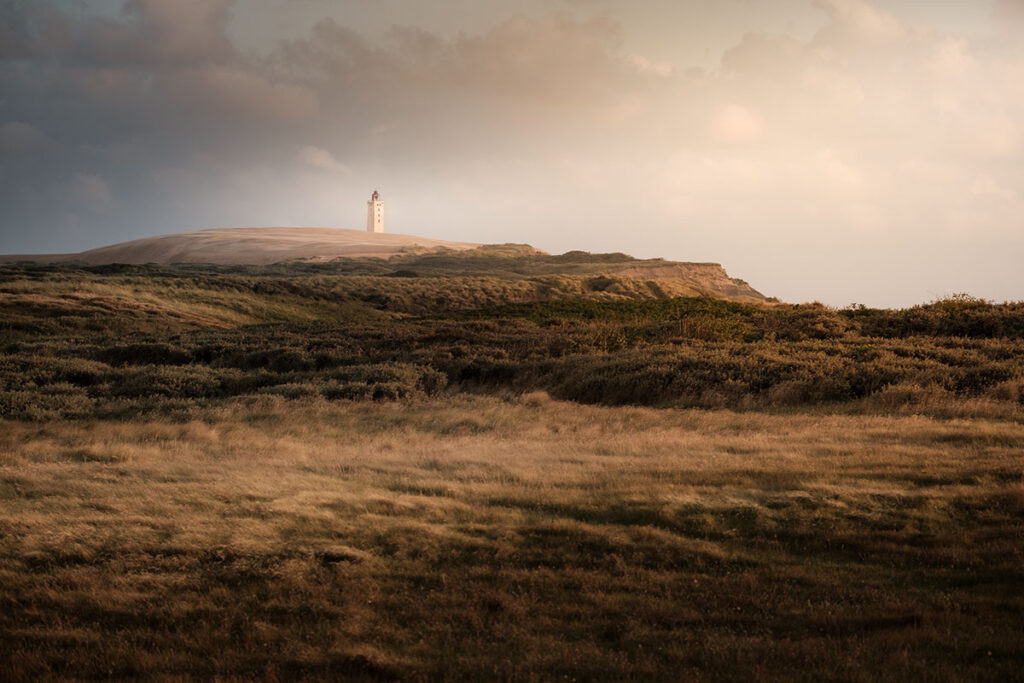Rubjerg Knude Fyr is likely one of the most photographed lighthouses in Denmark. The lighthouse is located in Lønstrup, in the northern part of Jutland, right in the middle of the sand dunes. The dunes in this area can reach up to 60 meters high due to the influence of the wind. It’s remarkable to see Rubjerg Knude Fyr from a distance, but it’s just as fascinating to visit it up close. I visited this unique lighthouse while driving along the route of lighthouses on the west coast of Denmark, from the south of the country all the way up to the northernmost point.
History of Rubjerg Knude Fyr
Rubjerg Knude Fyr has an interesting history. The lighthouse was built in 1900, on a spot where there was no sand in sight, more than 200 meters from the shore. It served as a beacon until 1968. However, the lighthouse increasingly faced sand drifting towards it, which they couldn’t control. Planting shrubs didn’t help and the dunes kept getting higher. Over the years, Rubjerg Knude Fyr suffered considerable damage from the drifting sand and erosion. Its function as a lighthouse ceased and from 1968 onwards, the lighthouse and its buildings were used as a museum. Due to the eroding coastline, the distance to the edge became smaller and smaller and by 2002, it became so dangerous that the museum had to be closed. The outbuildings were demolished to prevent them from slowly falling into the abyss.
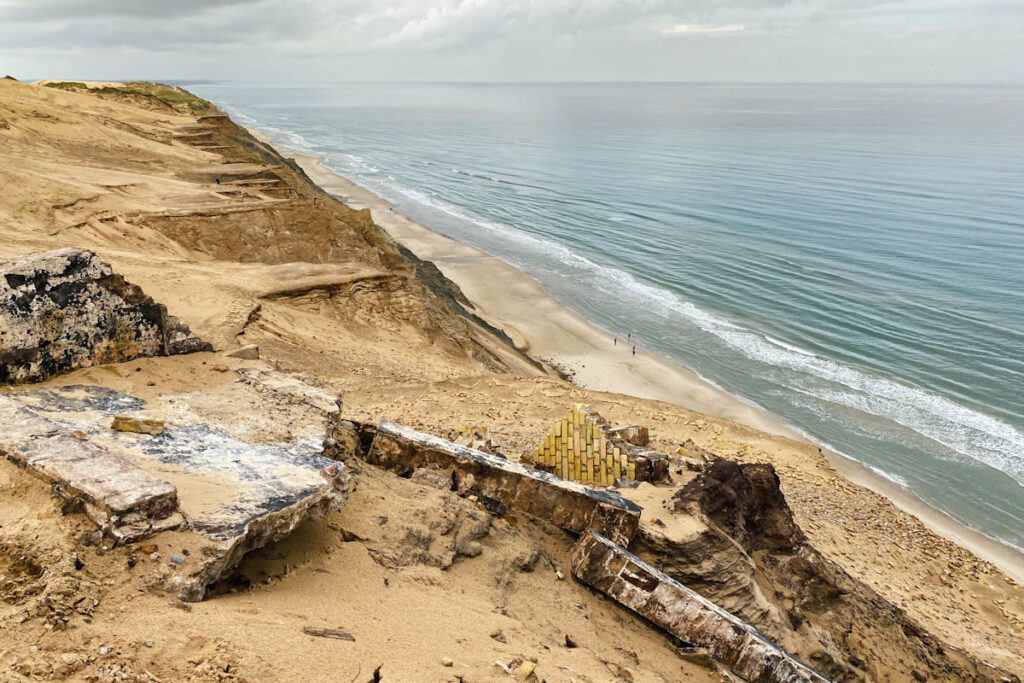
Relocation of Rubjerg Knude Fyr in Denmark
For a long time, it was believed that the lighthouse couldn’t be saved and would fall into the sea by 2023. Eventually, a plan was developed to preserve the lighthouse. In 2019, Rubjerg Knude Fyr, which was just a few meters from the shore at the time, was relocated 70 meters inland using a special rail system. It is expected that the lighthouse can safely remain in its current location until 2060.
Climb Rubjerg Knude Fyr for a stunning view
You can climb the 23-meter-high Rubjerg Knude Fyr (free of charge) for an even better view of the surrounding sand dunes, beach and sea. Inside the lighthouse, a spiral staircase takes you all the way to the top. It can be quite busy on the staircase, so be cautious. Especially when you’re climbing up and staying to the right, the steps are narrow. Along the way, you’ll encounter small windows that already offer idyllic views. The climb is definitely worth it!
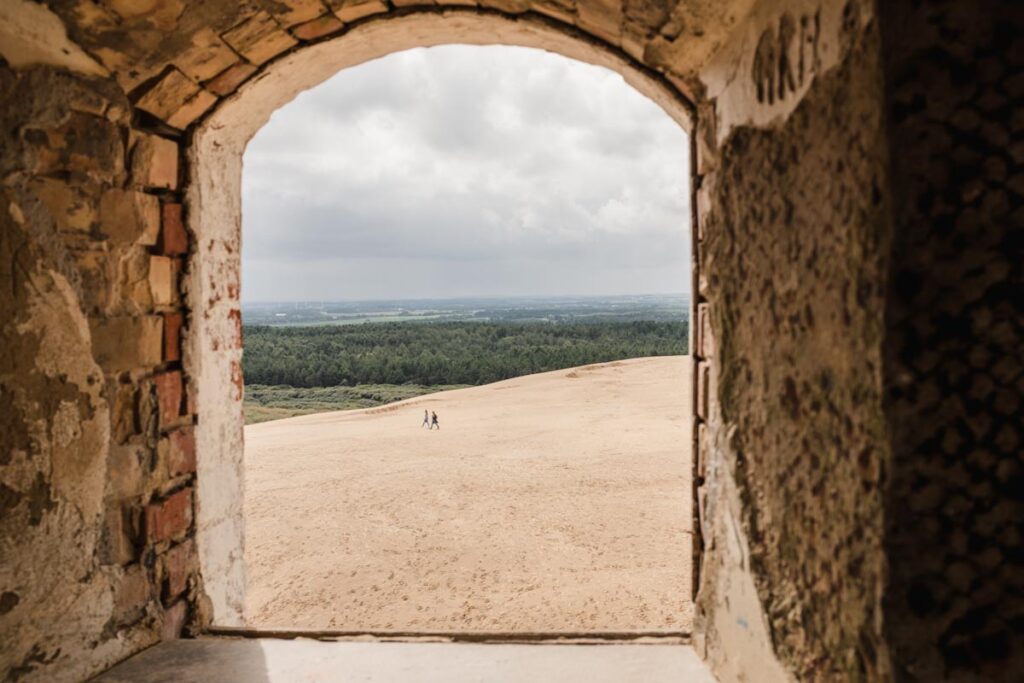
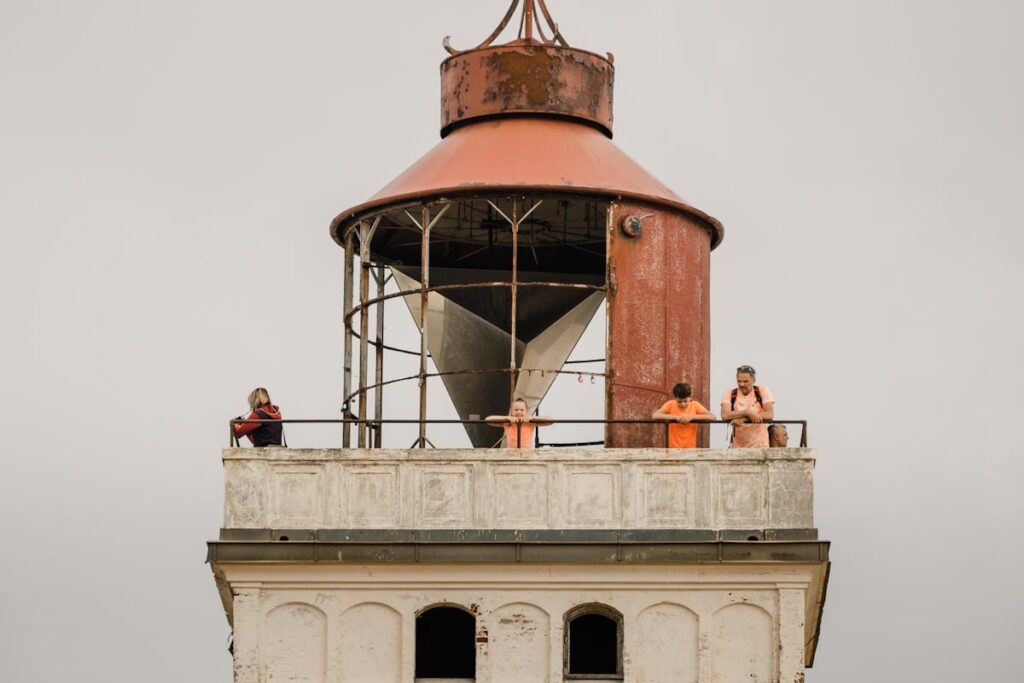
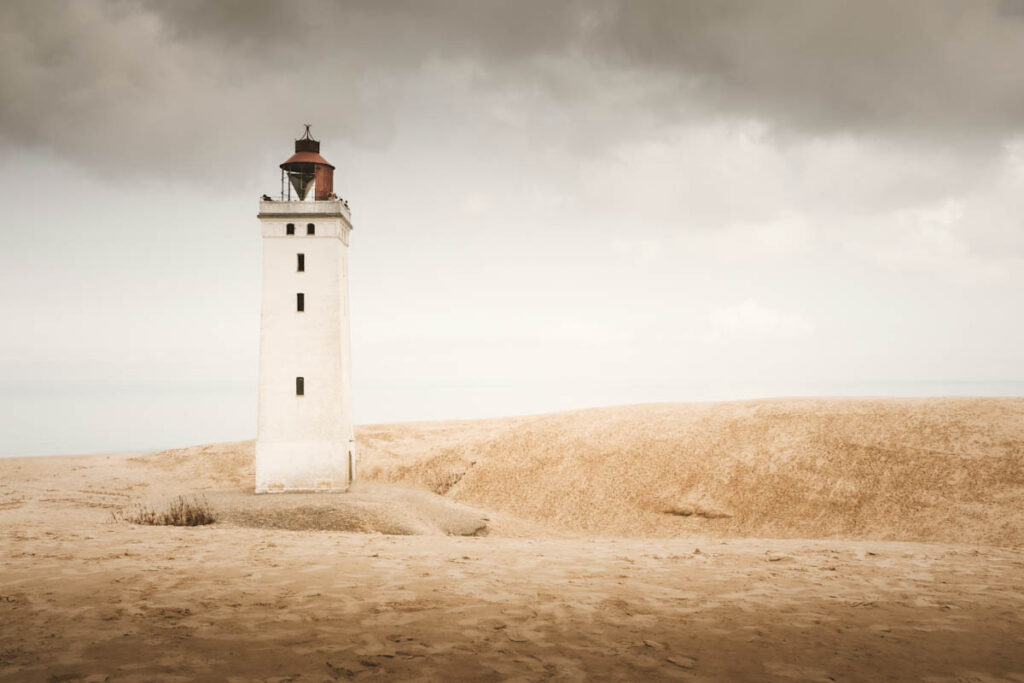
How to get to Rubjerg Knude Fyr
There is plenty of free parking available at the parking lot along Rubjergvej. From here, it’s about a 15-minute walk to the lighthouse. The first part of the walk is along a paved path and then it continues with a climb through the soft sand. Another option is to park your car at Mårup Kirke (Kirkegård), along the coast to the north of Rubjerg Knude Fyr. This walk also takes about 15 to 20 minutes. However, there is less parking available here, depending on how many campers are parked. You could consider driving here first, also to visit the old cemetery at this location. If parking is available, walk from here along the top of the sand dune toward the lighthouse. The view of Rubjerg Knude Fyr from this side is phenomenal, and you’ll have far fewer people in the frame if you’re into photography.
